How to drink enough water
Some people actually drink too much water. And believe it or not, there can be too much of a good thing. But most of us could stand to drink more water. If you want to increase your H2O intake to get all the benefits of drinking enough water, here’s what you can do.
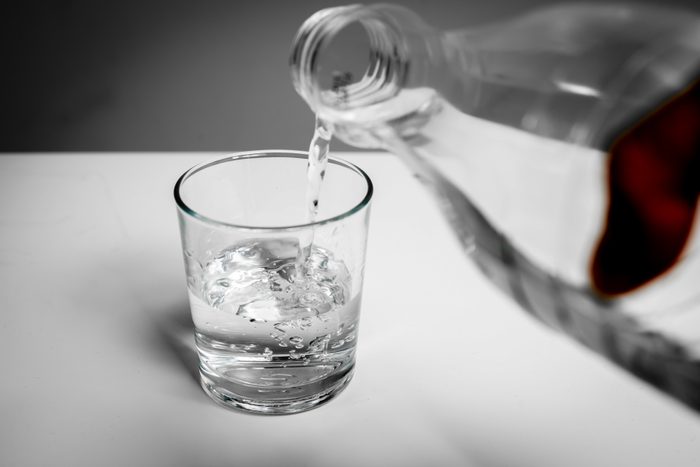
Determine how much water you need
Here’s an easy trick to find out how much water you require to stay hydrated: Measure how much water it takes throughout the day to ensure that the color of your urine is somewhere between light yellow and clear. Then monitor your water intake to make sure you’re drinking that amount every day. Some people prefer pen-and-paper tallies and charts. Others use apps such as Waterlogged, Water Your Body, or Daily Water. (Here’s how to spot these unexpected signs you’re dehydrated.)
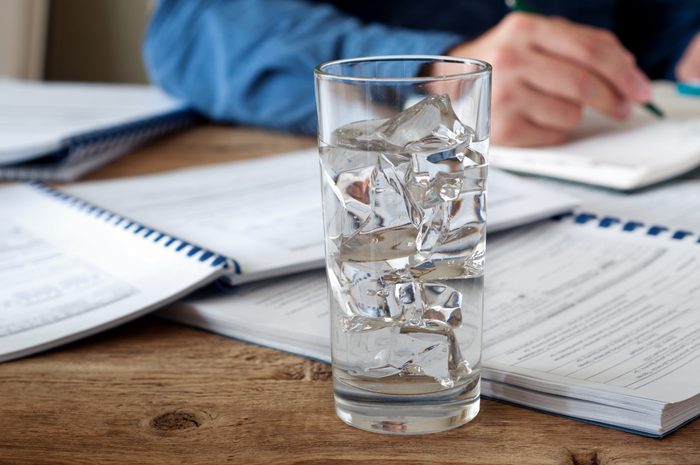
Keep your water cold
Although temperature preferences vary from person to person, you’re generally likely to drink more water if it’s refrigerator-cold, according to Joanne Larsen, a Denver-based registered dietitian and author of the nutrition website Ask the Dietitian. “I freeze water in an empty gallon milk bottle in the summer and take it out in the morning when gardening,” she says of her own routine. (Here’s why you shouldn’t chew those ice cubes in your glass.)
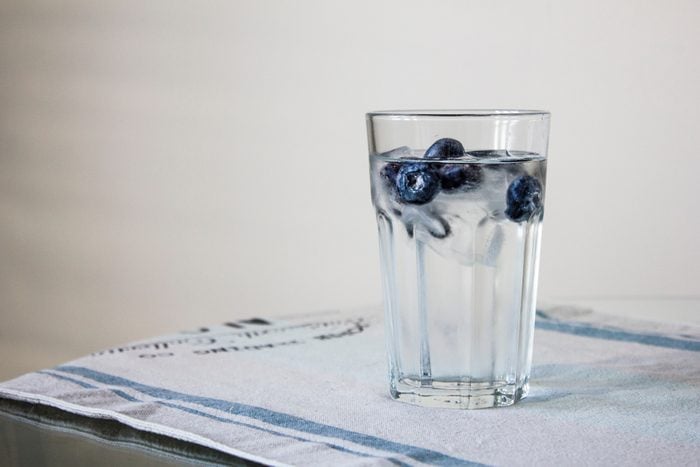
Toss in jazzy flavorings
If you ever find yourself craving something different, try adding different flavorings to your water. “Using a water bottle with an infuser is a great way to naturally flavor your water, and it can be fun,” says Karen Sechowski, the district dietitian at Northwestern University. “Lemons and limes are always good, plus they’re in the grocery store year-round at a reasonable price. When berries are in season, I like to use those.” Some other tasty options include mint, cucumber, basil, orange, lavender, watermelon, and even a splash of fruit juice. Check out these other types of water that also count towards your daily fluid intake.

Set timers or alerts
If you change your routine to drink enough water you’ll also change your body. Willpower alone might not be enough to keep up a hydration routine. If you keep forgetting to guzzle down your recommended doses of water, set timers, or alerts, on your phone to remind you to drink periodically throughout the day. Bonus points if you set your alert ringtone to water-themed songs.
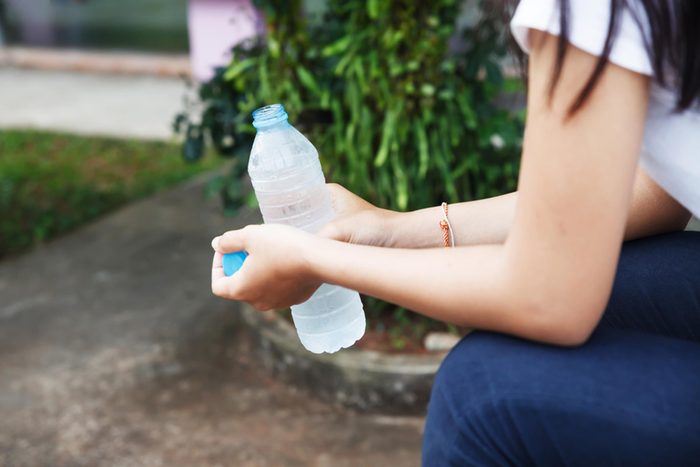
Mark deadlines on your water bottle
If you need a system that’s even more rigorous, use a permanent marker to draw water levels and specific deadlines on your bottle so you’ll know how much water you should have drunk by any given time of the day. Follow your “hydration schedule” to the T, and don’t forget to keep refilling your water bottle. (To be environmentally friendly, opt for one of these stainless steel water bottles.)
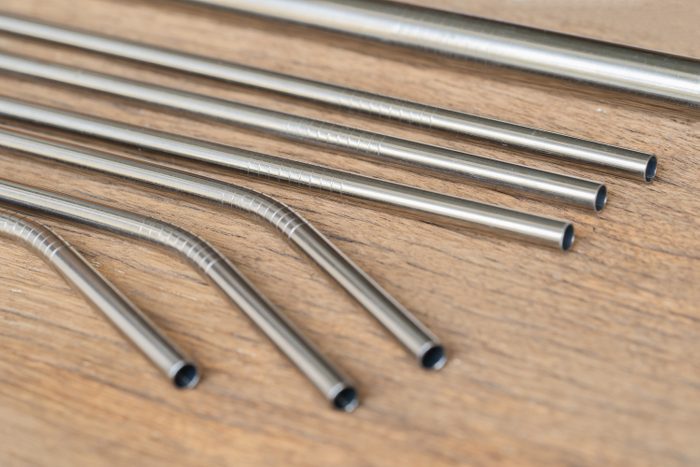
Use a straw
There’s a reason drinks in restaurants are almost always served with straws: You tend to drink more water in a shorter amount of time if you use a straw. Apply the same trick to your water routine, and you’ll be well-hydrated before you know it!
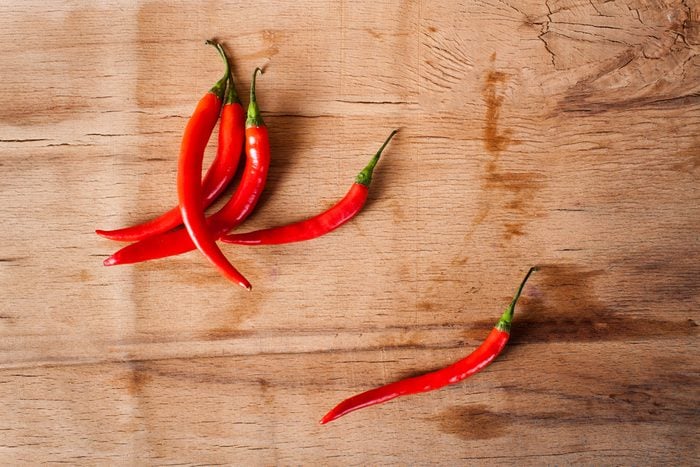
Eat spicy food
Have you ever found yourself reaching for a glass of water after some particularly spicy curry or dynamite chicken fajitas? Kick-start your taste buds and make yourself thirstier by eating more spicy dishes. The water you gulp down might not settle the burning sensation in your mouth, but at least it will make you reach for more water.
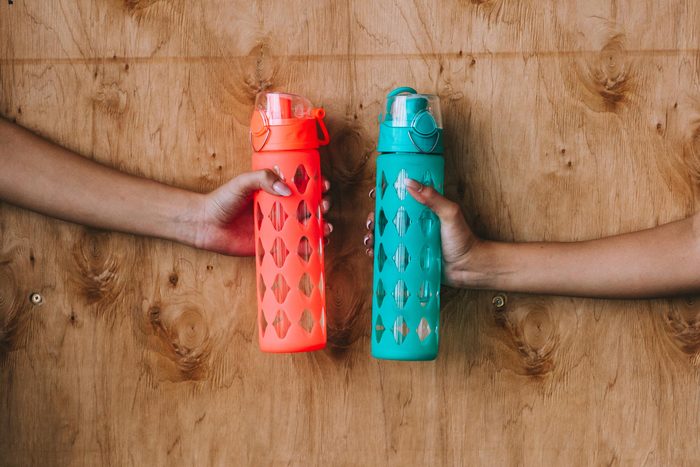
Find the perfect water bottle
The more you love your water bottle, the more likely you are to use it every day. Whether you prefer big or small, sporty or cute, or plastic or stainless steel, there’s a perfect reusable bottle out there for you. Instead of refilling a disposable water bottle (which isn’t a good idea), find a reusable water bottle you like and use it all the time.
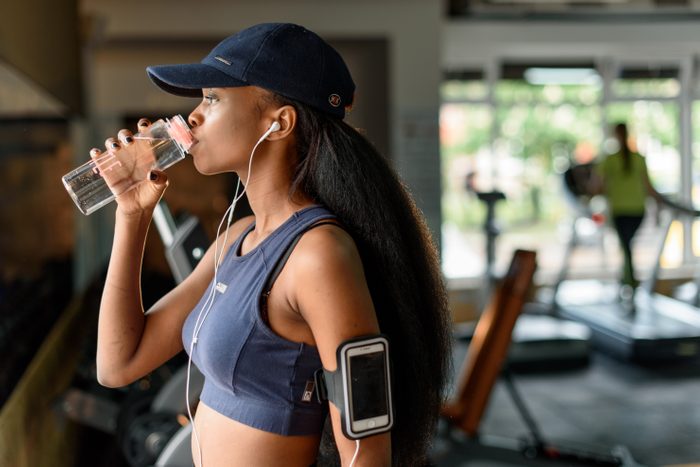
Sip before you’re thirsty
“Remember that thirst is not a good indicator of hydration status,” says Larsen. By the time you’re thirsty, your body has already lost enough water to reduce your work performance by 30 percent, says Larsen. Nip that fatigue in the bud by guzzling water throughout the day. Carry a water bottle everywhere—having it at your side is a constant reminder to drink up and stay hydrated.
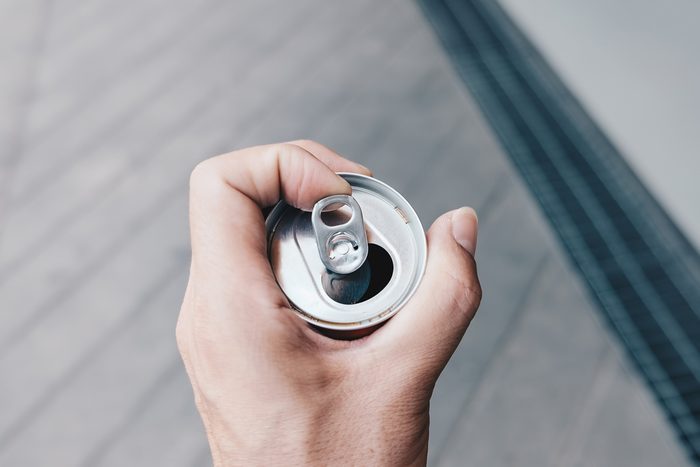
Switch out dehydrating drinks for water
“Caffeinated beverages and sugary sodas will reduce your body water,” says Larsen. “Caffeine will stimulate your kidneys to excrete water, and sugary soda will pull water from your surrounding tissue to dilute the concentrated sugar in soda, thereby reducing your hydration. Neither are recommended to keep you hydrated in hot, humid weather.” So instead of reaching for that cup of coffee or glass of juice as soon as you wake up in the morning, quench your thirst with a glass of water instead. (But, stop believing these hydration myths right now.)
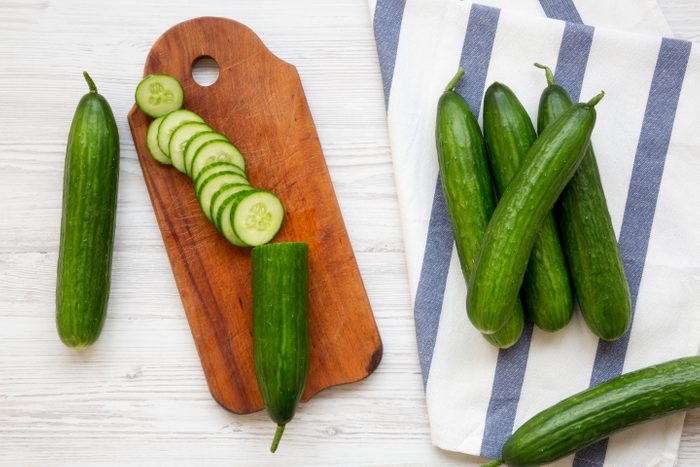
Eat your water
Foods with high water content (including cucumber, lettuce, celery, radishes, watermelon, tomatoes, spinach, bell peppers, strawberries, broccoli, and zucchini) can contribute to your daily water consumption. At the same time, Larsen says, “you cannot rely on just the water in food to provide you with enough water to stay hydrated. You need to drink additional water.” The best solution? Drink more water and munch on water-rich foods.
Next, check out these sneaky causes of dehydration.
